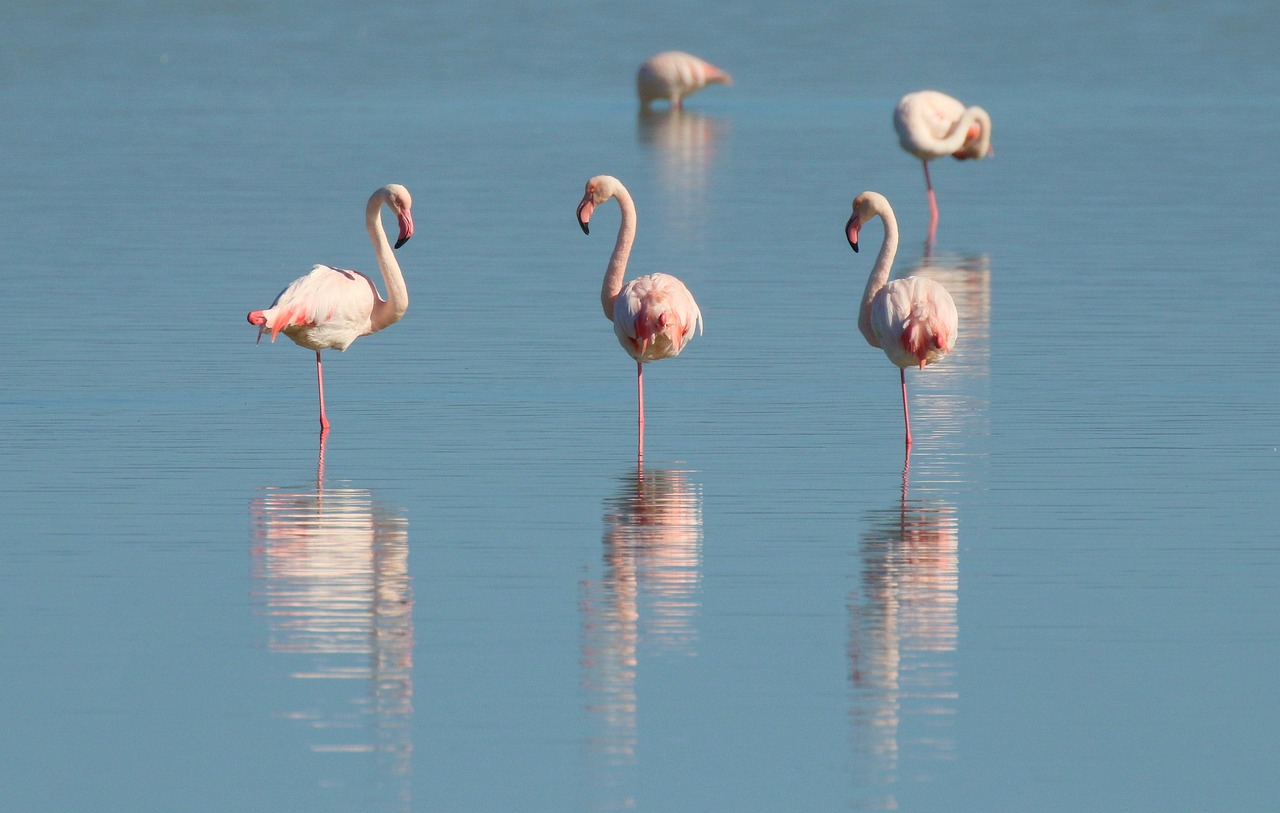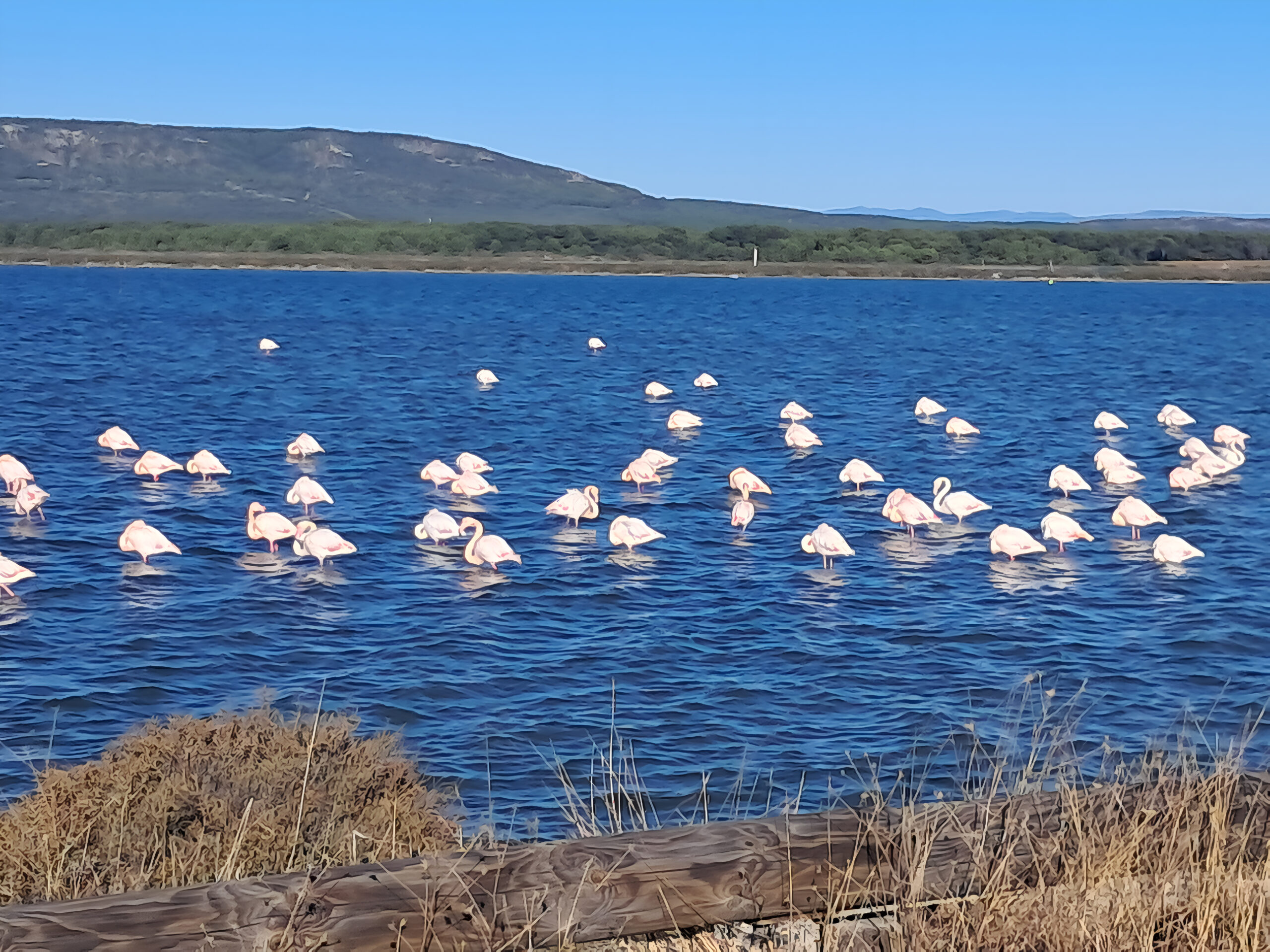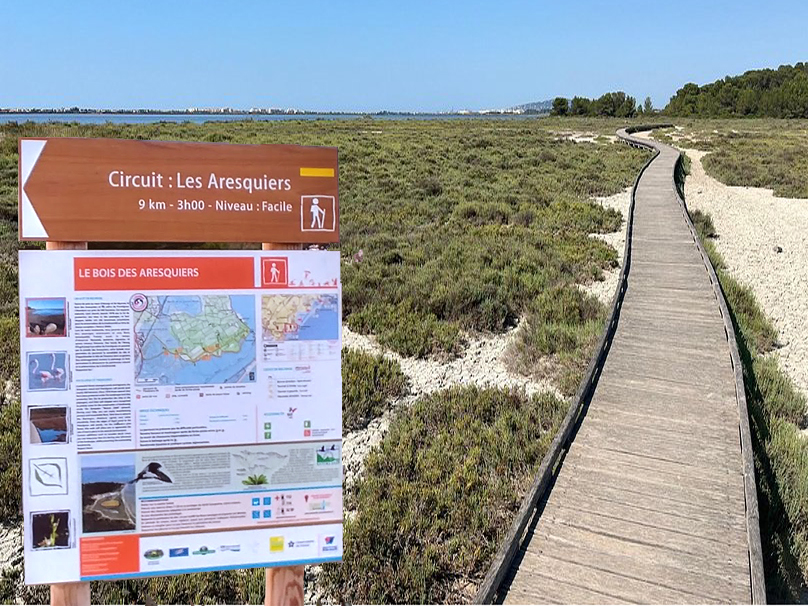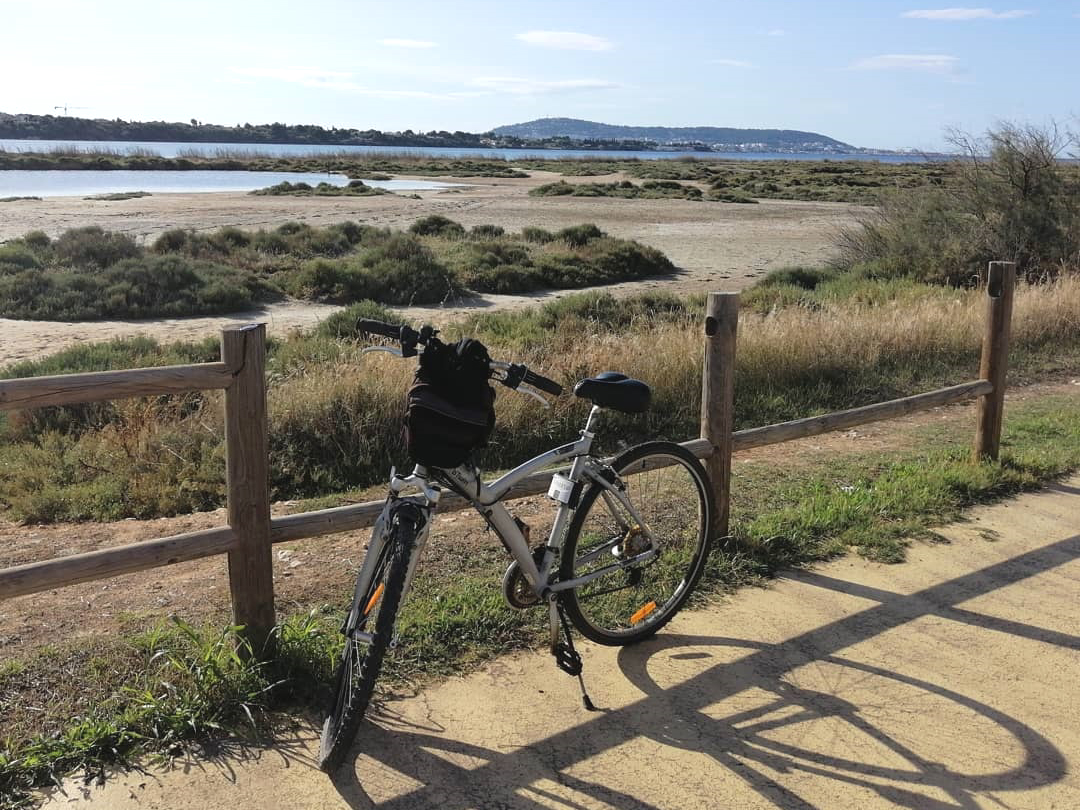Where can we see pink flamingos near Sète ?
Le Pouffre et Le Piade***
Discover the magic of pink flamingos near Sète
Step into paradise during your holiday, where the lagoons and former salt pans around Sète come alive with the grace of flamingos. These iconic birds, known for their elegant movements and distinctive color, will make your every visit memorable.

When is best to see pink flamingos?
Spring, from March to July, is the best time to spot flamingos as thousands arrive from Africa. Juveniles stay throughout the summer, and some colonies live year-round in places like Étang d’Ingril and the former salt pans of Frontignan, feeding and sometimes nesting in the shallow brackish waters. Their numbers increase notably during the spring migration. Nearby, the Camargue region hosts tens of thousands of flamingos in summer, with up to 50,000 adults and 12,000 juveniles counted in record years. Many of these birds disperse to the Thau lagoon and the Frontignan salt pans during this period.
Best flamingo-watching spots near Sète
The Thau lagoon, Étang d’Ingril and the former salt pans of Frontignan are prime sites to observe flamingos in their natural environment.
1. Étang d’Ingril and the former salt pans of Frontignan
About 20 minutes from Sète by car or 30 minutes on foot (2.5 km) from Frontignan train station, or even by bike from Sète, these wetlands are home to a resident population of flamingos. Early morning visits offer a good chance to see them feeding in the waters and taking off—quite impressive, especially if they fly right overhead! Windy mornings are even better as the flamingos are more active, and the breezes keep insects away. Étang d’Ingril is also a popular spot for kitesurfers.

Explore the “lagoons and former salt pans” loop
You can follow self-guided trails around Étang d’Ingril or the former Frontignan salt pans. On foot or by bike, the completely flat 15.5 km trail offers clear views over the lagoon and the ancient saltworks, where salt was produced for centuries. Thanks to a wooden footbridge, you can even cross part of the lagoon for total immersion in nature. Be aware of muddy areas after rain, and remember that cycling on the dikes is prohibited. The starting point is the Plan du Bassin car park; follow the paved road to the right before passing under the railway. You can also park at Pont des Aresquiers and walk along Étang d’Ingril.
![]() Maps are available on the Frontignan Tourist Office website.
Maps are available on the Frontignan Tourist Office website.
A little history about the former salt pans
The former salt pans are also of historical interest, with remains of the former salt industry visible along the walking paths. Salt production in Frontignan flourished from 1334 to 1968, peaking in the 19th century with 200,000 to 250,000 quintals per year, exported to Toulouse and Marseille. The Salins du Midi group industrialised the trade, but consolidation led to closure in 1968, displacing workers. Once an economic pillar, the saltworks later turned to chemical industries before becoming a Natura 2000 reserve. Today, the Conservatoire du Littoral protects the site, where canals and wildlife have replaced the thriving salt trade.
2. Les Bois des Aresquiers
Les Bois des Aresquiers, a protected wetland and coastal forest near Vic-la-Gardiole, has been managed by the Conservatoire du Littoral since 1980. Covering 200 hectares, it is home to rare Mediterranean flora such as Bupleurum glauca and endemic orchids, as well as former salt pans that attract flamingos and migratory birds. The site features 8 km of marked trails through pine forests and marshes, with boardwalks protecting sensitive habitats. Historically linked to medieval agriculture and 19th-century salt production, it now blends ecological conservation with controlled public access. Parking is available at Pont des Aresquiers.

Picnic tip: Bring some local specialties (maybe a Muscat de Frontignan?) and take a break at one of the panoramic viewpoints over the lagoon.
Bonus for cyclists: Extend your ride to Plage des Aresquiers for a refreshing swim in the Mediterranean after your exploration.
![]() Maps are available on theFrontignan Tourist Office website
Maps are available on theFrontignan Tourist Office website
3. Bagnas Nature Reserve
The Bagnas Nature Reserve, located between Agde and Marseillan near the Thau basin, is a protected coastal wetland of 561 hectares renowned for its rich biodiversity. This national nature reserve and Natura 2000 site features a mosaic of habitats including ponds, marshes, dunes, and salt meadows, home to over 240 bird species such as flamingos, herons, and rare species like the black stork and osprey. It also hosts various reptiles, amphibians, mammals, fish, and insects.

Visitor centre: Maison du Bagnas at Domaine du Grand Clavelet, Route de Sète 34300 Agde. Open Tuesday to Sunday (10 am–1 pm and 2 pm–6 pm)
Access to the Bagnas National Nature Reserve is restricted to protect its environment and abundant wildlife. ADENA (Association for the Defense of the Environment and Nature of the Agde region) offers trails around the reserve, accessible on foot or by bike, as well as scheduled guided tours.
![]() Maps are available on the ADENA website.
Maps are available on the ADENA website.
4. Lac Flamingo on the bike path from Sète
The bike path around the Thau lagoon between Balaruc and Bouzigues passes through Lac Lolivet, also known as Lac Flamingo, which is part of the wider Thau lagoon ecosystem. The shallow, brackish waters of Lac Flamingo provide an ideal habitat for flamingos. Birdwatchers and nature lovers, take the bike path from Sète to enjoy panoramic views over the lagoon and, in the distance, the typical oyster farms of the Thau lagoon between Lac Flamingo and the pretty town of Bouzigues.

Why are flamingos in the Thau Archipelago so “pale”?
The characteristic pink hue of flamingos comes from pigments (carotenoids) in their diet, mainly when they eat the small shrimp Artemia salina, itself rich in colourful algae. In the Thau Archipelago, most flamingos are sedentary and do not feed exclusively on these shrimp. Their more varied diet contains fewer carotenoids, which explains why their plumage is often a lighter or pastel pink compared to other regions.
However, during certain behaviors like flying, displaying or squabbling, you can spot brighter shades of pink under their wings. Young flamingos have gray or white plumage at birth, hence their local nickname “petits-gris” (little greys).
Are there any organised visits to see pink flamingos?
The Frontignan Tourist Information Centre is an excellent resource for up-to-date information on local birdwatching opportunities, including seasonal guided tours or special events. Staff can provide maps, advice on the best observation points, and details about organized outings. It’s a great starting point for visitors seeking personalized recommendations or group experiences.
Happy birdwatching!
Note: All photos are the property of Leigh and Mehdi Kamraoui and lepouffre.com. They are not royalty-free.

